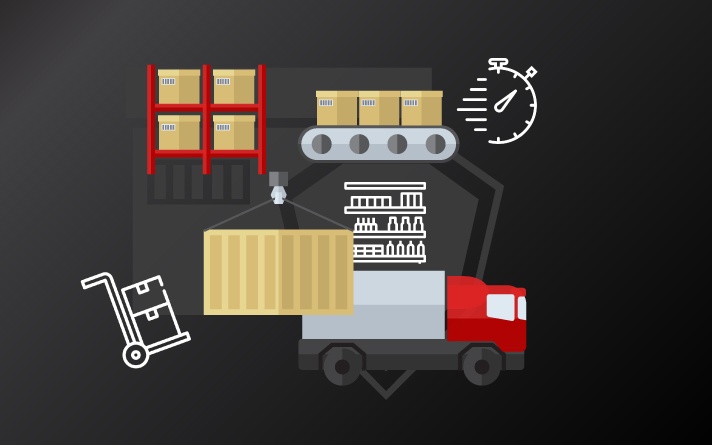
A retailer-supplier relationship must be built on, among other things, trust. More than that, it should be personal. That makes sense if you consider the consequences of a broken supply chain. Of course, suppliers should do more than just supply products. It’s just as crucial that you help with the merchandising of those products in-store too.
In fact, you could take that further to argue the point that as a supplier, you should look to do more. You also need to get involved in every aspect of category management.
For now, it’s worth pointing out that collaborating with a retailer on category management benefits everyone.
Why do suppliers need to get involved in merchandising?
When talk comes to why suppliers should get involved with merchandising, the easiest way to persuade anyone is to look at the consequences of not doing it. Of course, that should be obvious - as soon as you understand why you need to get involved, there shouldn’t be any more resistance.
With that, below are a few reasons why you should consider getting involved if you haven’t already decided.
1. If you don’t, it weakens your relationship with the retailer
The first consequence of not getting involved is that it weakens any relationship that you have already built with the retailer.
How so? Simple: if a retailer is running a category management process, they want you to get involved with the ranging and merchandising (planogramming) process. After all, you have a unique perspective that they might not have.
However, if you don’t get involved, it’s evidence enough that you’re not keeping up with the times. More importantly, it’ll give the retailer the impression that you’re not fully committed.
Given the competitiveness of the retail industry, retailers can’t sit around and wait for you to catch up. Of course, it’s not just the retailer who will ultimately suffer. In fact, you could argue that the retailer has plenty of other options available to them. If other suppliers are adding value in this way while you’re not, it’s you who will miss out.
2. If you don’t, it affects the sales of the products you supply
A second repercussion of not getting involved with merchandising is that it’ll affect the sales of the products you supply.
Here’s how: if you don’t commit, you’ll have no say or influence over where your products should be positioned on the shelf, or even over how much space your products should receive. In fact, there is a good possibility that if a retailer wants to derange your products, you also won’t be able to persuade them otherwise.
The obvious knock-on effect here is a loss in sales for your product. But it’s also more than that. A retailer-supplier relationship is one built on trust. However, if the retailer can’t trust that your products will sell, how will the relationship survive? The short answer is that it can’t.
As a side note, the retailer isn’t doing this on purpose. Instead, it's the result of you giving them no choice but to sideline your product in favour of another supplier who is continuously engaged and wants to help see the category grow.
3. If you don’t, your products won’t get fair positioning on the shelf
A third consequence of not getting involved with merchandising, which is directly related to the above point, is that your products won’t receive the space on the shelf that they deserve.
That’s especially true if your opposition has a say. In that case, your competition is more than likely going to allocate more space to their brands or those from suppliers who are helping with the merchandising. And since you’re not involved, you won’t have a say.
As a side note, if there is a category captain in place, part of their role is to be unbiased and consider what’s best for the category. However, if you don’t get involved, your products won’t be prioritised, which means you’re left with less space and, as stated above, fewer sales.
Of course, you can’t blame any of the above on someone else. If you don’t want to get involved, you need to take responsibility.
What can suppliers do around merchandising?
If you’re currently not involved with merchandising and you’ve just read the above, we wouldn’t blame you if you aren’t feeling panicked. Of course, knowing the consequences of not getting stuck in is one thing. You also need to be able to see what you can do to help.
Below are a few ways in which you can get involved, and in doing so, add value to a retailers’ business.
1. You can provide a macro view of the category
As a supplier of a specific range of products, you’ll no doubt have had the opportunity to build yourself up as a specialist in your category. That’s especially true if you’ve been in business long enough since you’ll have dealt with many retailers across multiple markets.
It's in this moment where you can provide value and get involved.
Because you supply products to more than just one retailer, you have a unique insight into the category and the products within it from multiple angles. You’ll also have done surveys and shopper behaviour research to see what works and what doesn’t. It’s that type of insight that a retailer doesn’t have.
There is also the point that in having access to market data, you’re more than likely to understand how different strategies and tactics can drive the category to perform optimally, no matter the market. Offer that insight to a retailer, and it’s not only their business that will benefit. Your business benefits too.
2. You can offer advice on how a category should be laid out
Using market data, you have the ability to not only suggest how a category should be laid out but also persuade a retailer to follow through and do it. More than that, you can also prove why a product should receive more space.
Of course, when making such suggestions, you do need to consider the merchandising principles of the retailer as well as the category strategy that they are following. You also need to ensure that what you are suggesting is in the best interests of the category.
Let’s look at this from a space allocation perspective to illustrate our point.
Let’s say that a product has four facings on a shelf and sales for this product are growing consistently while another product, which also has four facings and happens to be yours, is a slow mover. In fact, sales are on a decline. In this instance, there is a solid argument to increase the facings on the one product that is selling consistently and reduce the facings for the other.
While it’s not ideal to give your product less space, it’s responsible ranging. It’s what’s best for the category. More than that, it gives you an opportunity to show the retailer that you want what’s best for the category.
3. You can help retailers pursue a specific merchandising strategy
As a supplier, you get to pack out a product range onto a planogram using different merchandising techniques. Of course, that should make sense if you consider that a merchandising strategy culminates in the form of a planogram. That’s because there is no use in you offering advice around merchandising without there being any visual representation of that advice.
That said, the most important thing here to remember is that you and the retailer you’re working with are aligned on the role, strategy, and tactics used to drive the category forward.
For example, if the category holds a Destination role, you might want to ensure that the SKUs that allow you to follow this role are positioned at eye level to make it easier for your customer to locate it. You also wouldn’t want to pursue a strategy such as Profit Generation, which is more suited to a Routine role.
Meanwhile, if the category you’re working on follows a Seasonal role, you’d instead look to employ a traffic building or excitement generating strategy that could include placing items in hot spots throughout the store.



